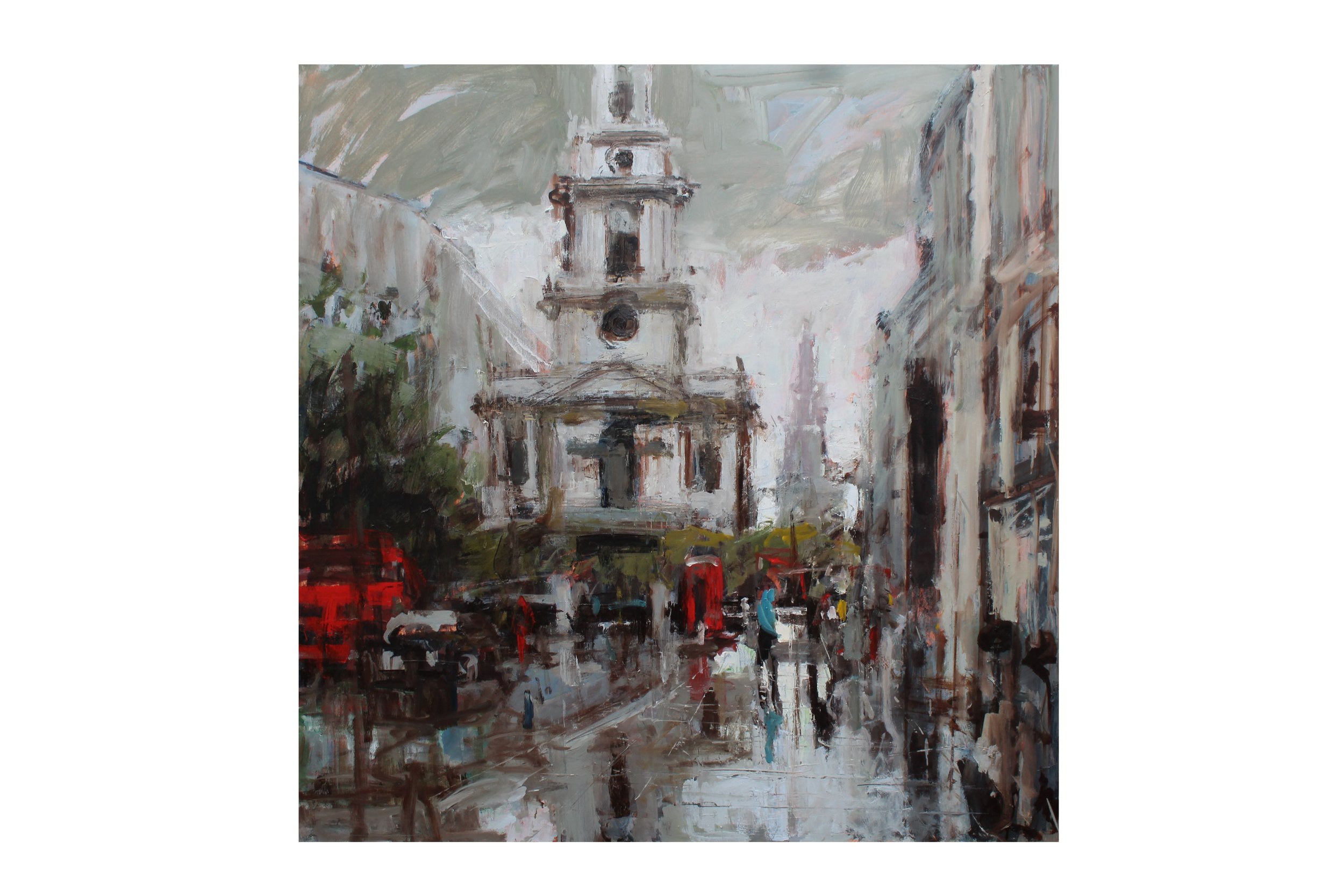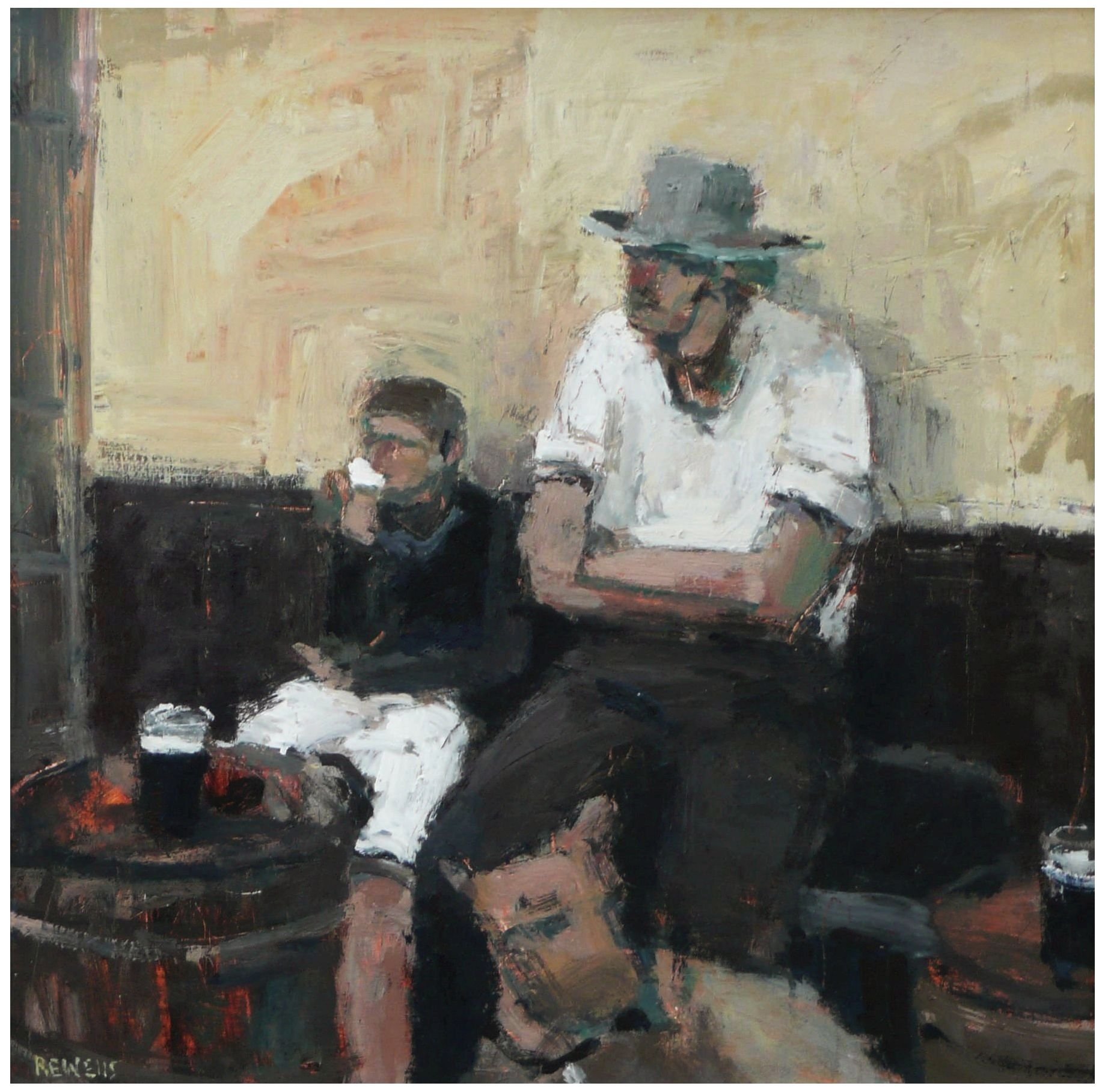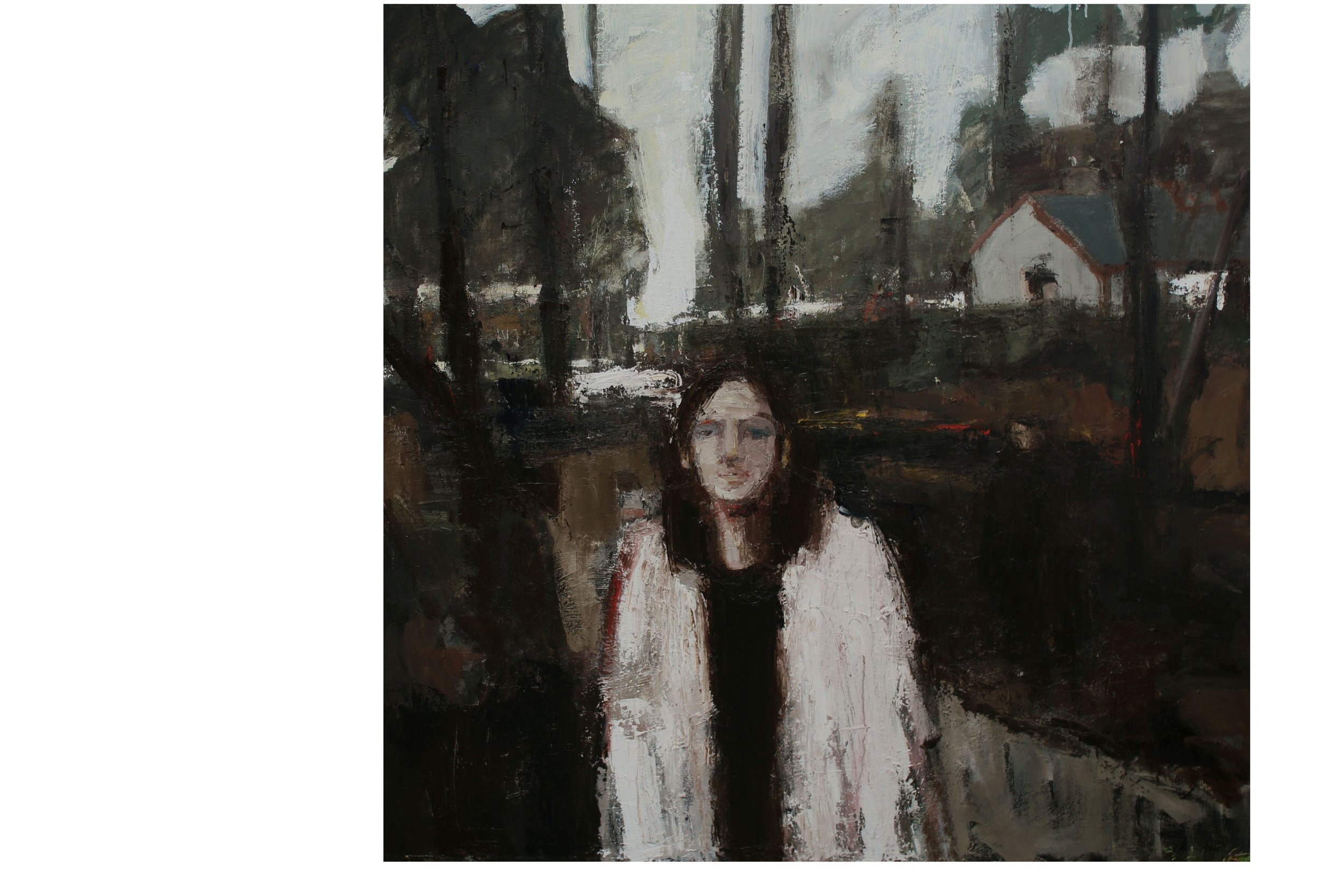ARTIST INTERVIEW: Robert E. Wells
Robert E. Wells is a Yorkshire-born artist, known for his cityscape paintings as well as rural landscapes and figurative works. A member of the New English Art Club and the Royal Society of British Artists, he regularly exhibits his work in solo shows and the RA Summer Exhibition.
After college, he worked long hours as a junior designer at an architectural practice, whilst playing in a band at night. This exhausting schedule soon made him realise that he needed to decide between design and music. A job offer to work as an interior designer in Kuwait helped make the decision.
Upon his return to the UK, he found work with a succession of design-based employers, which eventually led to him setting up as a specialist freelance architectural illustrator.
As he became more established, he started getting more and more work in London, with clients including HOK and RTKL. At first, he commuted on a weekly basis from Leeds, treating every visit as a sketching exercise – walking for miles around the capital recording anything and everything of interest. “It all seemed so vibrant and totally compelling,” he recalls.
He finally moved to London in 1998, settling in Barnes, after being offered the position of Senior Associate at Joseph and Partners – one of London’s oldest architectural practices. In order to keep him out of mischief, they funded a part-time MA in The Illustration and Rendering of Architectural Spaces which he completed in little over a year.
Further employment came as Senior Visualiser at Harrods in Knightsbridge, and it was around this time that Wells began working on small oils, as well as his usual sketchbooks. He had already enjoyed some success at the RA Summer Exhibition, but it was in 2002 that he really started to find his feet as a full-time artist.
What inspired you to pick up a paintbrush?
My mum told a story about me taking the sheets from her bed and then painting a train around the mattress side. It was the first recollection of painting, I was about three, and more concerned with getting into trouble.
By becoming an artist you disproved those people who in your youth doubted your abilities. At what point did you think that you could pursue a career in art?
We came from the town of Morley, near Leeds. I failed the 11+ and was sent to an awful school. At the end of school, I was interviewed by the careers teacher who gave me a list of options for the building trade. When I informed him I was going to art college, I received a ten-minute rant about it being the worst mistake etc, I knew at that moment I would back myself not him.
Where do you find your inspiration for your paintings? Have your surroundings influenced your artwork?
When I left college, I became a designer for an architectural practice in Leeds. I worked for a few practices including a stint in Kuwait. Eventually, more and more people wanted my drawing rather than design skills and so moved to London to work for the largest practices. Demand grew for my rendering of buildings which occupied most of my time.
When I was eventually ready to paint for a living, it was a natural progression to concentrate on what I knew best. Few people painted in London in the late nineties and my work was quickly taken on by galleries which helped make a smooth transition.
Thinking about your cityscapes, what is your process for creating one of these paintings?
When I first moved to London, I carried a sketchbook everywhere. I adored the place. The sketches formed the basis for much of my later paintings, and this is a practice I have carried on with. I tend to process everything through them preferring to sketch outdoors and work on larger projects in my studio.
What is the last entry in your sketchbook?
My latest sketchbook studies have moved away from architectural themes, with my children now often forming the basis for new works.
What thoughts/feelings would you like to evoke when someone sees your work? How does painting make you feel?
I am interested in the physiological impact painting has on the observer. I try not to state any specific narrative, but instead allow the viewer to form their own connection. To me, a painting that touches someone is the most rewarding aspect I could ever hope to achieve.
What is your favourite scene to paint?
I am now at a stage in my career where I can explore new themes and ideas, everything is a joy to paint, with new challenges offering boundless possibilities.
Who is your favourite artist? If they were sat next to you right now, what would you ask them? Do they have an influence on your work?
I would most like to meet Rembrandt, he was not only a technical genius, but not afraid to go against trends and fashion. He could have opted for an easier existence but followed his own distinctive path that elevated his status to what we see today.
What has been your greatest achievement/challenge as an artist so far?
My only concern is for today. I consider myself very lucky to paint for a living, I am mindful of how grateful I am to be given such an opportunity in life, to me that is as good an achievement as I could hope for in the context of art.
Why do you think art is important in society?
Having two children aged 18 and 22, it is a worry as to how their world will look in the future. A.I will dominate so many aspects of life. I hope there will be still artists and creators out there offering a spiritual contact with the human soul.












